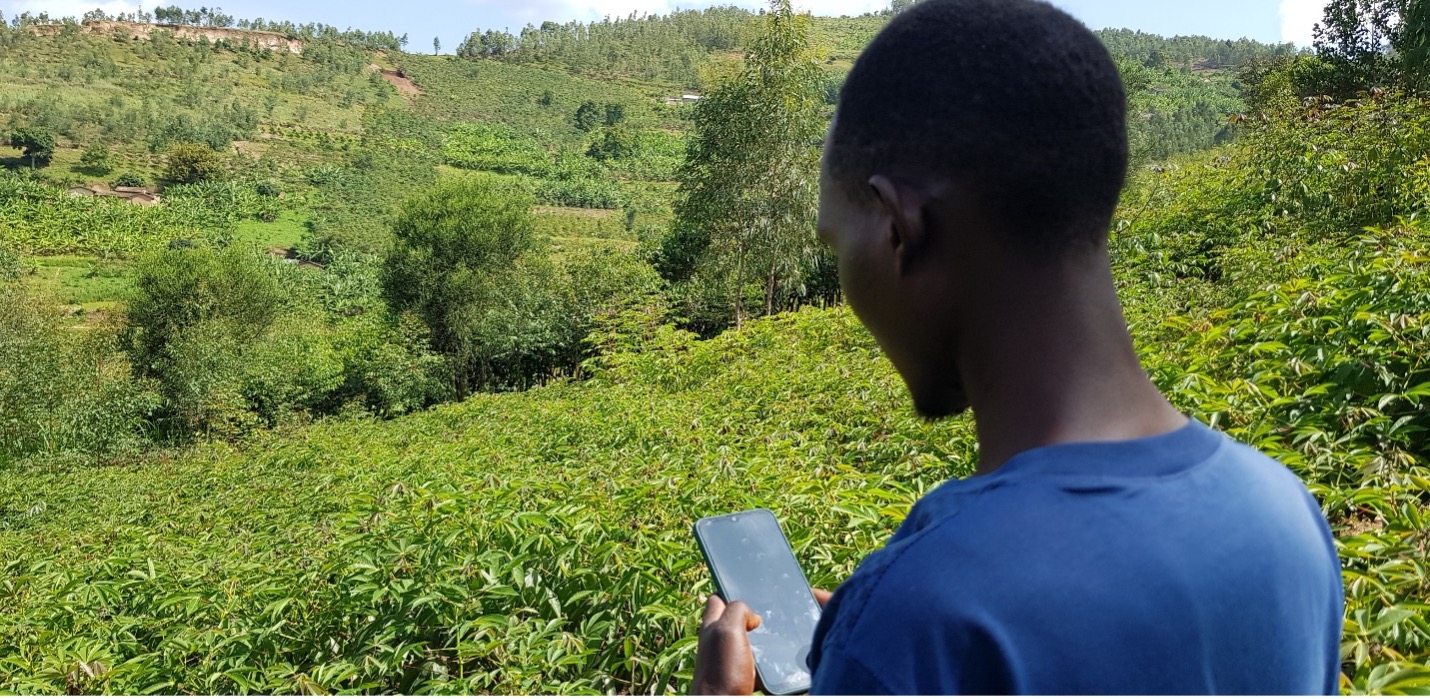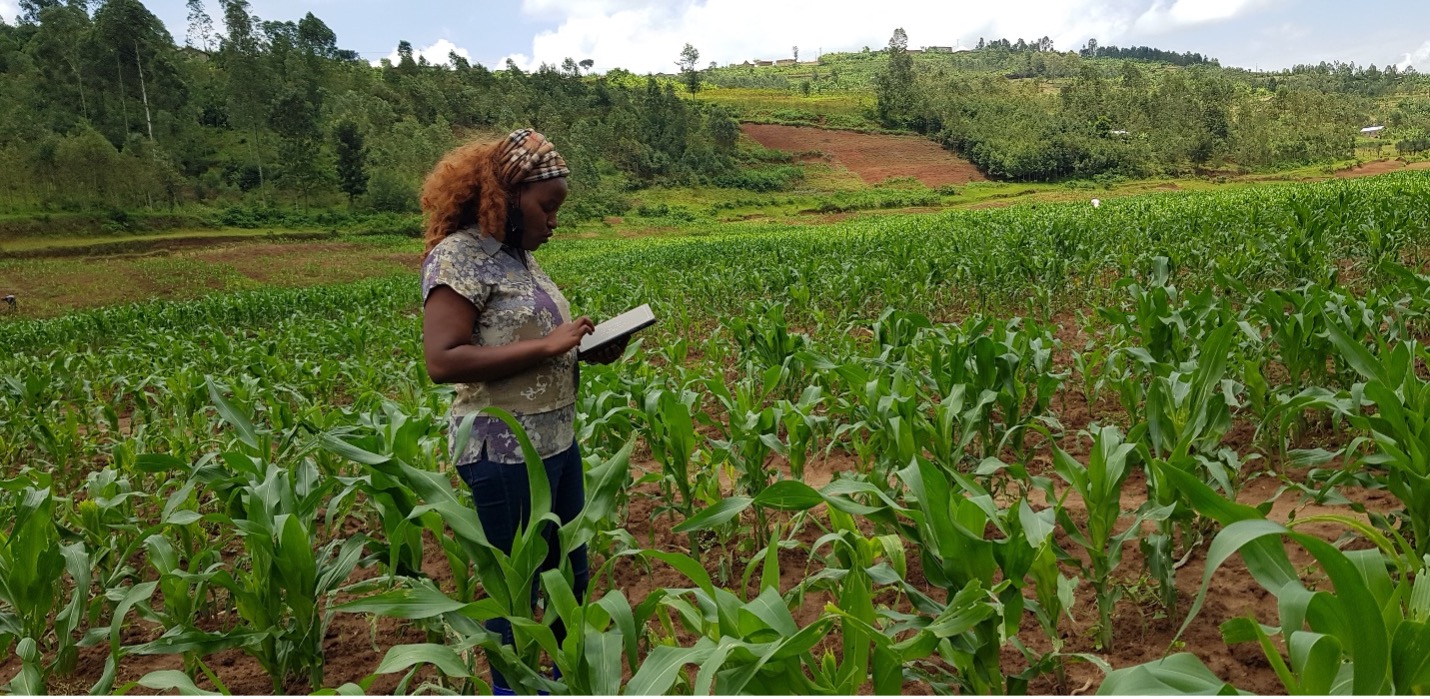Effective and adequate fertilizer and amendment applications to soil produce a good yield within an integrated soil management approach in a sustainable manner. It is important to gather relevant information about soil properties, including soil types, soil fertility, nutrient status, and soil acidity, to apply the correct quantity and quality of fertilizer and lime. This information benefits farmers and decision-makers and investors in knowing where to put increased efforts for subsidiaries and policy engagement.
CGIAR entered a partnership with Rwanda Agriculture and Animal Resources Development Board (RAB) through the Bill & Melinda Gates Foundation-funded project “Rwanda Soil Information System (RwaSIS).” The aim is to develop fertilizer and lime recommendations, avail information on different types and occurrences of erosion, and design a functional and interactive National Soil Information Service to sustainably and dynamically monitor changes in soil properties. RAB is collaborating with five organizations () to provide the required technical support to achieve these three objectives.
Photo: Fertilizer and lime ready to be used in the research field trial.
RwaSIS has established more than 800 research trials for six priority crops in the crop intensification program (CIP)—rice, maize, soybean, beans, wheat, and cassava. Different fertilizer (12‒16 plots) and lime (7 plots) application rates have been tested. At the end of the project, crop response models to fertilizer and lime application will be developed to generate site- and crop-specific recommendations.
“In each trial, we established 16 treatments, except for rice with 12, using different element combinations, element omissions, and different doses for N, P, and K compared with current blanket recommendations and the control field. During a field visit a week before the midterm review, we will assess how fertilizer has performed in each treatment,” says Jolie Mutigerwa, RAB technician in the Southern Province.
Photo: Cassava trials in Kamonyi District, Southern Province, Rwanda.
The final findings will be ready for dissemination through extension service systems in Rwanda to reach farmers and other end-users. “The recommendation and validated rates will be uploaded into the Smart Nkunganire System, a national agricultural supply chain management system. Farmers and other users such as extension agents can use those new rates in different locations,” says Dr Charles Bucagu, Deputy Director General for Agriculture Development at RAB.
Dr Bucagu reiterates: “Under the RwaSIS project, we have completed soil sampling at about 2800 sample locations and collation of trial results for the first season to evaluate the responses of those crops to fertilizer and lime application rates. In the next step, we will validate those data with the second season we are currently establishing. Once we get the data for the two seasons, we will then proceed with the data analysis and formulate the new fertilizer and lime rates for the six priority crops. After that, those rates will be captured into Smart Nkunganire for future use by farmers.”
Digital tool for data collection and analysis
In partnership with the One CGIAR Excellence in Agronomy initiative, the project introduced the digital tool for data collection and analysis. The technology, named the “Sandman” system, collects geo-referenced data, and helps as a viable research data repository for later analysis and assessment.
Photo: RAB staff using the Sandman tool to collect data in maize field trials in Muhanga District, Southern Province, Rwanda.
“We have been collecting data manually from the field research trials. This new technology will solve the issues of losing data sheets or mixing them up. This tool is very helpful because it helps to conserve all our data safely in one repository, saves time, and ensures data accuracy,” says Ngamijiyaremye Etienne, Farmer Promoter in Muhanga District.
RAB commends the use of digital tools in agriculture with the support from CGIAR to national agriculture and research development. “CGIAR is among our key partners in digital extension services. Nowadays, Rwanda is heading toward digital agriculture using various digital tools. This project is helping to achieve it,” says Dr Jules Rutebuka.
Preliminary findings from Season 1 (2021/2022) show:
- Rice yield response to applying Nitrogen, Phosphorous, Potassium, and increased combined NPK.
- Maize and potato yield responses to Nitrogen, Phosphorous, and Potassium and increased NPK as well as lime application rates across different agroecological zones. NPK increased yields more than the current recommendation.







No Comments